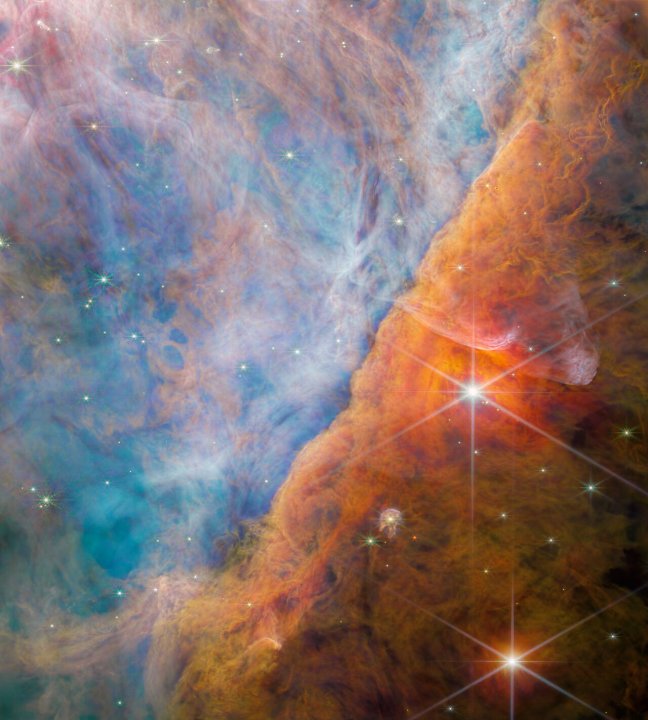The Orion Nebula is famous for its beauty, but it was also the site of a recent exciting scientific discovery. The James Webb Space Telescope has detected an important molecule in a planet-forming disk of debris within the nebula. The molecule, called methyl cation (CH3+), is a carbon compound that is important for the formation of life and has never been observed in space before.

Webb studied a part of the nebula using its NIRCam and MIRI instruments, observing an area where bright young stars are being born and giving off ionizing radiation which makes nearby dust and gas glow beautifully. As well as making for a stunning image, the glow also allows spectroscopy instruments to study the chemical composition of the disk by splitting the light coming from it into wavelengths and seeing which wavelengths have been absorbed.
Combining data from both instruments allowed scientists to identify the presence of methyl cation.

This particular molecule is a key part of organic chemistry, as it helps other carbon-based molecules form. It was identified in a planet-forming disk around a small red dwarf star called d203-506, located 1350 light-years away. The system is young, and it experiences high levels of ultraviolet radiation from other nearby stars. And while ultraviolet radiation is often destructive to organic molecules, in this case, the radiation may actually have helped the methyl cation to form.
One theory is that energy from the radiation helps the molecule to form. The researchers also found that nearby disks which didn’t experience so much radiation had more water present, unlike the disk d203-506 which had no water. “This clearly shows that ultraviolet radiation can completely change the chemistry of a proto-planetary disc,” said lead author Olivier Berné of the University of Toulouse in a statement. “It might actually play a critical role in the early chemical stages of the origins of life by helping to produce CH3+ — something that has perhaps previously been underestimated.”
The research is published in the journal Nature.



